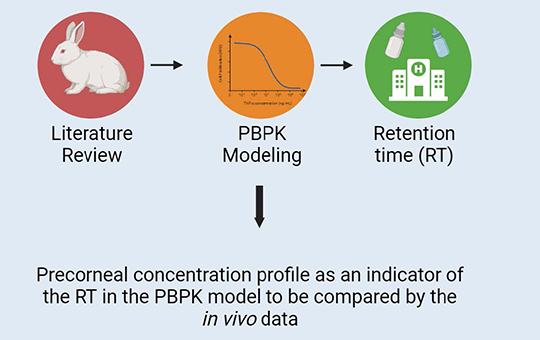ECTS: 15
Faglige nøgleord: Precorneal compartment, viscosity, retention time, PBPK modeling
Antal Studerende: 1-2
Vejleder: René Holm
Medvejleder: Zahra Ghaemmaghamian
Beskrivelse:
Considering tear turnover and flow rate, the retention time of a formulation is a critical parameter in the development of non-invasive topical ophthalmic products. The GastroPlus OCAT module offers a valuable tool f or optimizing formulation attributes such as viscosity. It is possible to study the effect of formulation viscosity by a factor defined as drainage rate in the software:
Nasolacrimal rate = DR × C×(Vt-Vphys) + TF × C
DR and TF are the drainage rate and, tear flow C i s t he precorneal drug concentration, V t is the instantaneous precorneal volume, and Vphys is the baseline precorneal volume. Based on this equation the DR and the TF could be changed in different dosage forms and formulations (e.g., DR is equal to 1 for water) [1].
Di Colo et al. [2] investigated the retention time of various polymeric systems on rabbits’ eyes, taking into account the both mucoadhesiveness and viscosity of the formulation.
Thus, the objective of this project is to assess the accuracy of the DR factor in representing the polymer concentration and formulation viscosity, specifically examining how the viscosity of a formulation influences its precorneal retention time.
Metoder: Literature data, Gastroplus OCAT module.

Referencer:
[1] Maxime Le Merdy et al. “Application of mechanistic ocular absorption modeling and simulation to understand the impact of formulation properties on ophthalmic bioavailability in rabbits: a case study using dexamethasone suspension”. In: The AAPS Journal 21 (2019), pp. 1–11.
[2] Giacomo Di Colo et al. “Selected polysaccharides at comparison for their mucoadhesiveness and effect on precorneal residence of different drugs in the rabbit model”. In: Drug development and industrial pharmacy 35.8 (2009), pp. 941–949.